
Innovation: The DNA for Growth
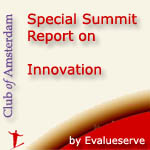
| Innovation: The DNA for Growth by B Vijayalakshmi, Hedda Pahlson-Moller, Evalueserve Evalueserve is a Knowledge Partner of the Summit for the Future You can’t solve a problem on the same level that it was created. You have to rise above it to the next level – Albert Einstein This quote by Albert Einstein clarifies the common misconception about innovation. Innovation is not only about developing a product or service from scratch but is also about adding value to an existing product or service. Organisations across the world have focussed on innovation in order to achieve the competitive advantage required for creating and sustaining growth. The effect of globalisation on the world economy has also played a significant role in fostering innovation. Organisations soon realised that without innovation they faced the possibility of extinction. Research and development (R&D) and innovation go hand in hand; however, R&D is only one aspect of innovation. While innovation is about introducing a new idea or process to the end customer or developing and improving an existing product or service, R&D is about conducting original investigations to gain new knowledge for improving products or services. Risks and Rewards come in a package Innovations and the risks associated with them are directly proportional. On the other hand, the rewards of taking these risks are high. All resources employed for successful innovation are subject to some form of risk. These resources vary from the capital employed to the use of raw material, time, manpower and technical skills. |
| Read the full report – click here |
Opening Event Summit for the Future 2006
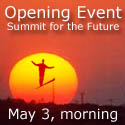
Opening Event Summit for the Future 2006
May 3, morning
When: Wednesday, May 3, 2006, 09:30-12:00
Where: HES School of Economics and Business, Fraijlemaborg 133, 1102 CV Amsterdam Zuidoost
Sijbolt J. Noorda, President of the Board, University of Amsterdam
Keynotes by
Sir Paul Judge, Chair of the Royal Society of Arts
Risk and Enterprise
Glen Hiemstra, Owner, Futurist.com
Video message from the future
Simon Jones, Director, HCS, University of Amsterdam,
former Managing Director, M.I.T. Media Lab Europe
Innovation and Risk – the New Media Experience
Richard D North, Media Fellow, The Institute of Economic Affairs
Risk: The Human Adventure
Moderated by Patrick Crehan, Chairman, Summit for the Future 2006
Club of Amsterdam blog
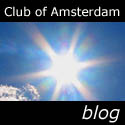 | Club of Amsterdam blog October 26: Synthesis of elBulli cuisine October 14: The new Corinthians: How the Web is socialising journalism September 20: A Future Love Story |
News about the future of Drugs & Pharma

Health and Consumer Protection Programme 2007-2013
The EU Commission proposal for Health and Consumer Protection Programme 2007-2013 brings together and extends the current EU Public Health Programme and the current programme in support of EU consumer policy.

Is India the Future of Pharma?
India is emerging as a powerhouse of pharmaceutical R&D. Backed by a scientist president and with an army of talented scientists, the country now has R&D capacity second only to the US, at one-fifth of the cost.
With the world’s fourth largest reservoir of scientific manpower and 150,000 MSc Chemistry graduates per year, India is also filling a gaping hole being left in the EU and US, where graduates are abandoning science for more lucrative careers in business.
“India is now the third most popular location for R&D investment and has plans to develop itself further from within as the number of original domestic institutions begins to evolve,” said Dr Brian Tempest, chief mentor, Ranbaxy Laboratories, who predicts that the country could now be the future of the pharma industry.
News about the Future

Safety Turtle is a safety device that protects your children from water accidents by sounding an alarm the instant he or she falls or ventures into the water.
Safety Turtle is an effective “last line of defense” to protect your children. Simply lock the Turtle wristband around your child’s wrist. If he or she falls into the water, a loud alarm will sound at the Base Station.

Sustainable bridges is a project which assesses the readiness of railway bridges to meet the demands of the 2020 scenario and provides the means for up-grading them if they fall short. The 2020 scenario requires increased capacities with heavier loads to be carried and bigger forces to be absorbed due to longer faster trains and mixed traffic. All type of bridges are being considered.
Next Event: Wednesday, March 29, 16:30-19:15
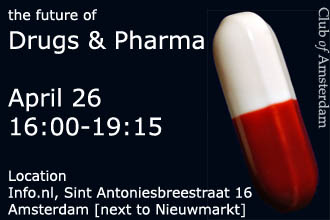
the future of Drugs & Pharma
Wednesday, March 29, 2006
Registration: 16:00-16:30, Conference: 16:30-19:15
Where: Info.nl, Sint Antoniesbreestraat 16, 1011 HB Amsterdam [next to Nieuwmarkt]
With Wilko Coers, Algemeen directeur, Meducom:
Developing new drugs in a nutshell
Ahmed El Sheikh, Scenario Planning, The Pharmaceutical Strategist:
“Evolutionary Medicines”
Discerning the Future of Drugs through the Lenses of a Novel Evolutionary Paradigm.
and our Moderator Cees Langezaal, Managing Partner, Synmind BV
Summit for the Future blog
 | Summit for the Future blog http://summitforthefuture.blogspot.com July 13: Summary of the Summit for the Future 2006 May 22: Dispatches from the Frontier |
Recommended Book
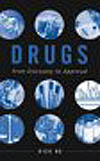
| Drugs-From Discovery to Approval by Rick Ng Statistics show that out of five thousand compounds with initial promise, five will go into human clinical trials, and only one will become an approved drug. This tiny fraction illustrates the huge complexities involved in bringing a drug to market, a process that brings together scientific research, medical ethics, business, and various regulatory agencies. Drugs From Discovery to Approval presents a clear, step-by-step overview of the entire process. Using simple language, this comprehensive guide introduces basic concepts, then moves on to discuss disease target selection and the discovery processes for both small and large molecule drugs. Subsequent chapters explain preclinical studies, clinical trials, regulatory issues, good manufacturing practices (GMPs), and perspectives on the future. Coverage also includes: A helpful listing of current FDA and European guidelines A special section on regulatory authorities and processes in Japan and China Rich illustrations throughout, including more than ninety figures and tables Useful appendices on the history of drug discovery and development Representative examples of drug mechanisms in action Written for professionals in the pharmaceutical industry, and readily accessible for students of pharmacy or medicine and others interested in drug discovery, Drugs From Discovery to Approval represents a practical and approachable reference on this important process. |
Light Projects
The Leni Schwendinger Light Projects
Light Projects’ evolving mission to create wondrous spaces continues–by “Fusing Art + Design with Light”. In 2006 we are focusing on light, space and time to develop innovative “chromatic spatio-temporal environments”.
Chroma Streams, Tide and Traffic
Completed in July 2005, Chroma Streams is a site-specific, integrated artwork for the highly-trafficked Kingston Bridge in Glasgow, Scotland, a commission by Glasgow City Council as part of its municipal lighting strategy. Leni Schwendinger directs light to illuminate and give resonance to the bridge’s overlooked surfaces and to heighten its interplay with the river flow beneath it. Through a series of shifting and evolving real-time patterns, the artwork explores the flow of traffic on the bridge itself and its connection to the slow change of the River Clyde tidal currents.
The artwork is a syntactical structure into which the chance pattern of traffic and the predictable tidal cycles of the Clyde are visually presented – and interpreted – through an ever-shifting, radiant color montage. As traffic pours into and out of Glasgow city centre the interactive artwork feeds back nighttime rhythms of city circulation to onlookers and passersby. A multiplicity of vantage point perspectives, from cars and riverside pedestrians – combined with the color-changes – offer unique spatial views of the bridge and river.
Two monumental concrete arcs make up the Kingston Bridge
The artist has selected the Bridge’s underside – its visible parallel connection – and its riverine reflection as “the canvas” of her illumination project. Directly under the bridge, the connective linear fascia frame color-flow patterns which overlap in the middle. The artist’s mutable palette selection and highly orchestrated programming allows for 144 sequences of unique color mixes. 36 of which are shown in the graph above. Collaborating with Glasgow architect Ian Alexander, physicist Lord Kelvin’s curvilinear 19th-century Clyde tidal graph was the starting point of the lighting armature design. Two stainless-steel standards – which are approximately six meters high – are sleek daytime sculptural elements of the Chroma Streams artwork. Traffic engineers have codified traffic flow – speed and volume – as Levels of Service, or “LOS”. These measurements are like classroom grades. Level A, is constant and clear-moving; the worst, Level F, is a static traffic jam. For Chroma Streams, sensors have been installed on streetlight standards located on the in-bound and out-bound bridges. Data are transmitted each minute to the lighting installation and downloaded into a computer program.
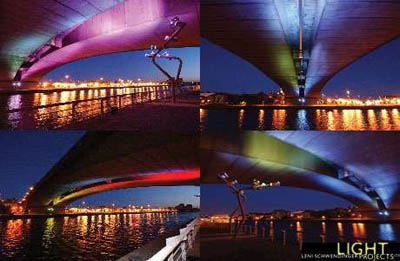
Like a prepared musical instrument, a palette of six colors has been selected for Levels A through F. The colors representing traffic are located in the warm end of the spectrum, starting with a clear yellow (A) grade to a strong red/pink (F). Tides, based on the 24-hour, 50-minute lunar day, are perhaps the world’s most predictable phenomena. Like clockwork, the average estuarine tidal cycle of the Clyde flows in, flows out and turns in and out to the sea. For Chroma Streams, a linear color pattern illustrates the four interlocking cycles. The tidal color palette is based on the cool end of the spectrum from pale green to indigo blue.
The rhythmic and tonal qualities of Chroma Streams arises from everyday occurrences familiar to Glaswegians. Separating traffic from the driving experience allows the familiar to be viewed within its larger, artistic, context. Relating traffic and tide – the Broomielaw area’s two great flows – allows viewers to contemplate a chance interrelationship between nature and the manmade.
.
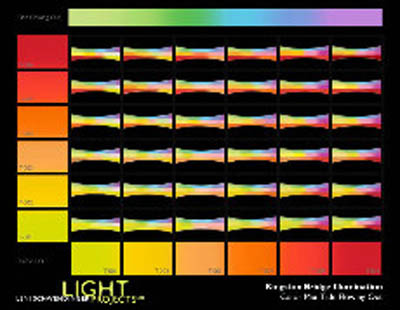
Intellectual Capital Report – Life Sciences

Intellectual Capital Report
Leif Edvinsson, CEO, Universal Networking Intellectual Capital, is a speaker in the Knowledge Stream about Life Sciences at the Summit for the Future, May 3-5, 2006Leif Edvinsson is a member of the project team ‘Intellectual Capital Report 2004’ by the Center for Molecular Medicine, CMM. This report is a milestone for EU commission forthcoming guidelines.
Excerpts from the report:
“Research is driven by a need for knowledge. The CMM knowledge goals are formed by society, science and various interest groups with the common aspiration to improve public health. In order to reach the knowledge goals, human, structural, and relational capital is invested in the key processes of CMM – research and knowledge transfer.
In turn, research and knowledge transfer generate results with various time-frames. Short-term results, output, are easily measured such as published discoveries or graduates from research training. These give rise to mid-term results, or outcome, when new medical treatments or science-based companies are developed. Most important, but also most difficult to measure, are the long-term effects – the impact of the research and knowledge transfer on the public health.
The CMM Intellectual Capital Report is modelled after all these external and internal factors, capitals and results. […]”
“Our research efforts build on four interdependent knowledge goals. The end goal is to improve quality of life. The means to meet this goal are to increase knowledge on common diseases, which in turn depends on the ability to strengthen the organizational knowledge and coaching for the future. These knowledge goals guide our daily activities as well as our long-term strategies.
1. Strengthening the organizational knowledge
The organizational knowledge base is not the sum of all facts. Sharing knowledge, networking and collaborating, form knowledge synergies which give rise to truly innovative ideas. Therefore, CMM strives to stimulate the mutual benefit between clinical experience and experimental competence, and aims to disseminate knowledge on medical technology and methodology relevant for molecular medicine. These measures strengthen the organizational knowledge base and increase the possibilities for major breakthroughs.
2. Coaching for the future
All experts have been beginners. To secure future generations of researchers in molecular medicine, we need to recruit young outstanding researchers and support their development. Our strategy is therefore to emphasize the intellectual, relational, and structural infrastructure for this group in particular.
3. Increasing knowledge on common diseases
The knowledge on common diseases is best developed through front line research. CMM is consequently aiming for competitive research and innovations, on the national as well as the international scene. Our joint efforts will successively reveal new potentials for better preemptive methods, diagnostics, and treatments.
4. Improving quality of life
The three previous objectives all aim at improving quality of life. With new knowledge, physicians can perform more accurate diagnoses and offer improved treatments. With increased awareness, all of us can choose a healthy life style and make conscious decisions about risk factors in our daily life.” […]
Agenda
| April 26 the future of Drugs & Pharma Wednesday, April 26, 2006, 16:00-19:15 Location: Info.nl, Sint Antoniesbreestraat 16, 1011 HB Amsterdam [Next to Nieuwmarkt] May 3 Opening Event Summit for the Future 2006 May 3, morning When: Wednesday, May 3, 2006, 09:30-12:00Registration Desk: 08:30-09:30 Where: HES School of Economics and Business, Fraijlemaborg 133, 1102 CV Amsterdam Zuidoost May 3-5 Summit for the Future 2006 May 3-5, 2006 The topics are Life Sciences, Media & Entertainment, Trade – Asia, Healthcare, Corporate Governance, Innovation as Risk Taking, Knowledge based Risk Management, Values and Spirituality, Cross-Cultural Competence and Creative Leadership. Where: HES School of Economics and Business, Fraijlemaborg 133, 1102 CV Amsterdam Zuidoost |
| May 31 the future of Reputation Management |
| June 28 the future of Journalism / Ethics in Journalism |
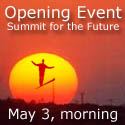
Club of Amsterdam Open Business Club
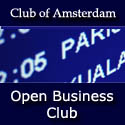 | Club of Amsterdam Open Business Club Are you interested in networking, sharing visions, ideas about your future, the future of your industry, society, discussing issues, which are relevant for yourself as well as for the ‘global’ community? The future starts now – join our online platform … |

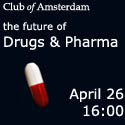
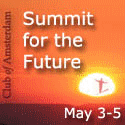


Customer Reviews
Thanks for submitting your comment!